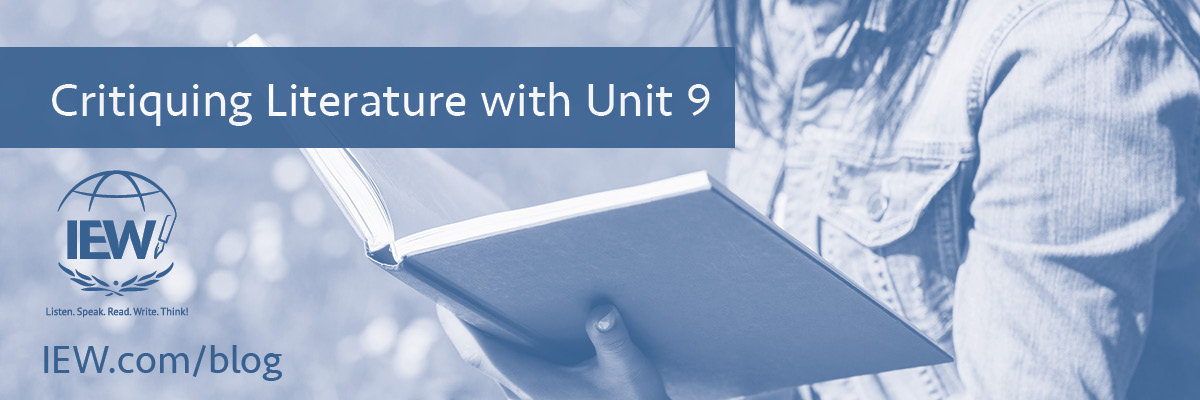
IEW teaches students to write with structure and with style. Style includes vocabulary. Structure is the elements found in compositions. Throughout the year students progress through nine structural units.
At this point in the blog series, we have covered Unit 1 through Unit 8. In Unit 9 students critique literature. A critique is an essay about a literary work. However, the structure for this type of essay differs from the 5-paragraph models taught in Unit 7 and Unit 8. Because students are writing about a piece of literature, Unit 9 does not contain topic-based paragraphs. Instead, the body of the essay follows the Story Sequence Chart, introduced in Unit 3.
In Unit 3 students tell a story and add details: A long time ago a fierce lion lived in the jungle. All the animals feared him. In Unit 9 students tell about a story and add opinion: The setting of the story is a jungle. The author uses descriptive adjectives, making the story easy to imagine. The main characters are a lion and a mouse.
Because young students struggle to write about a story, they begin with a completed Unit 3 assignment. By adding a conclusion and an introduction, they transform the paragraphs they wrote earlier in the year into a formal critique. As students mature in their reasoning skills and analyze literature in their education, the formal critique becomes a paper that critiques a piece of literature. The simplest way to help students write about literature is to require students to use the words character, setting, conflict or problem, climax, and resolution in the body paragraphs.
The sample paragraphs are from Frontiers in Writing.
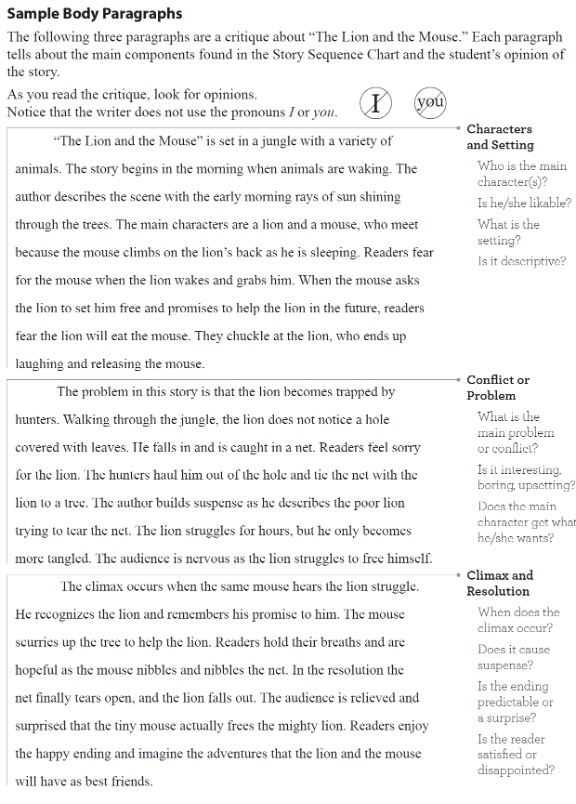
Introduction
In the critique model, the introduction parallels that of other units. The introduction must grab the reader’s attention and introduce the story and the author who wrote it. The simplest and most impactful attention getter is a quote taken directly from the story to be critiqued. The background information must include the title, author, publication information, and any additional details that may help the reader better understand the story.
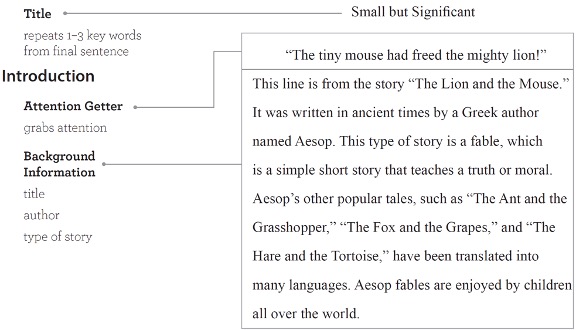
Conclusion
In the critique model, the conclusion follows its own unique structure. Mr. Pudewa explains that the conclusion is the most important paragraph of the paper because this is where students indicate their overall opinion of the paper. The conclusion must indicate if the student liked or did not like the story and why. Most of the time, the conclusion evaluates the entire piece of literature.
Here is an example where the critique author enjoyed the tale.
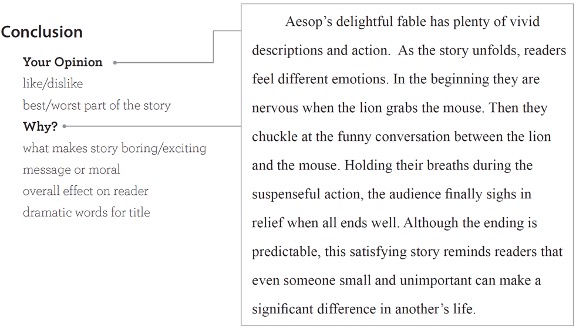
Here is an example where the critique author did not enjoy the tale.
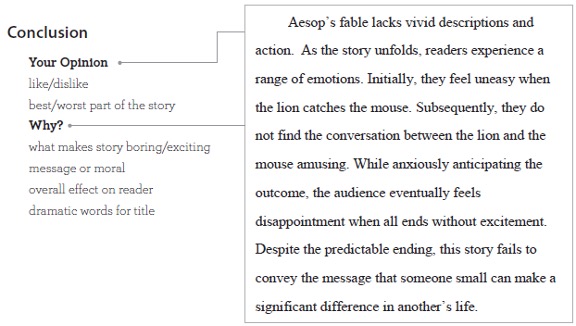
To help students enhance their ability to critique literature, IEW theme-based writing lessons and Structure and Style® for Students video courses provide a one-page critique thesaurus. By furnishing students with specific vocabulary words related to literature, teachers provide a way to discuss the elements within a story. As students learn adjectives like mysterious, foreboding, tragic, and suspenseful and verbs like exacerbated, heightened, lessened, and resolved, they develop a language to discuss literature more effectively. As their vocabulary expands, their ability to provide detailed insights into the basic elements of literature improves.
The Unit 9: Formal Critique model can be used to analyze stories, novels, plays, movies, and narrative poems. It works well for upper elementary and middle school students. As students study literature in more depth in high school, they can build on this basic model to analyze themes, characters, and literary devices. Pages 159-168 of the Teaching Writing: Structure and Style® Seminar Workbook provide a guideline for how to teach response to literature and literary analysis essays. For student examples of Unit 9: Formal Critique and Response to Literature essays, visit Magnum Opus Magazine.
by Heidi Thomas
Orignially posted on June 6, 2024
